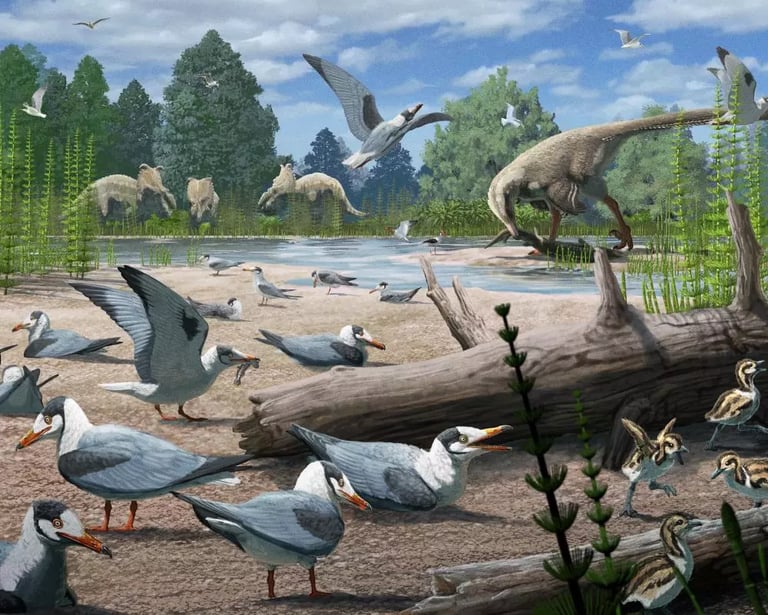Oldest Polar Bird Fossils Found in Alaska, Redefining Ancient Avian History
May 29, 2025
This groundbreaking study pushes back the timeline of bird reproduction in polar regions by 25 to 30 million years, surpassing previous evidence of nesting behavior from around 47 million years ago.
The findings open new avenues for understanding the evolutionary history of birds in extreme environments and their role in ancient ecosystems.
Paleontologist Steve Brusatte highlighted that these fossils demonstrate that birds were integral to high-latitude ecosystems millions of years ago, challenging the belief that such communities are a recent development.
Analysis of the fossils revealed three main groups of birds: extinct toothed birds similar to loons, gull-like species, and possible precursors to modern birds, although no enantiornithines were found.
While the fossils indicate that these ancient birds were breeding in the Arctic, it remains uncertain whether they wintered there, suggesting some may have been migratory.
The research team faced logistical challenges in accessing the fossil sites, involving a 500-mile drive, a chartered flight, and inflatable motorboats to reach their excavation site.
The fossil discovery was made in the Prince Creek Formation, a coastal floodplain from the Late Cretaceous period, which was located significantly closer to the North Pole than it is today.
The fossils included various bird types resembling modern loons, gulls, ducks, and geese, indicating that these ancient birds shared their habitat with non-avian dinosaurs.
Prior to this discovery, bird fossils were rare in Alaska, with only footprints previously known, highlighting the importance of these new finds in understanding avian history.
Researchers have uncovered over 50 bird fossils in Alaska's Prince Creek formation, dating back 73 million years, which represents the oldest evidence of birds nesting in polar regions.
The excavation in the Prince Creek formation, known for its dinosaur remains, utilized meticulous techniques to collect all available bones and teeth, contributing to Alaska's growing reputation for fossil bird discoveries.
Pat Druckenmiller, the study's senior author, emphasized the significance of these findings, particularly the rare discovery of baby bird bones, which enhances our understanding of avian history.
Summary based on 6 sources
Get a daily email with more Science stories
Sources

The Guardian • May 29, 2025
Birds were nesting in the Arctic during age of dinosaurs, scientists discover
ScienceDaily • May 29, 2025
Birds nested in Arctic alongside dinosaurs
Live Science • May 29, 2025
Birds have been nesting in the Arctic Circle for almost 73 million years, newly discovered fossils reveal